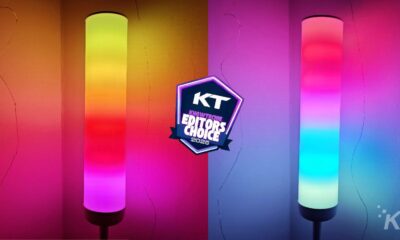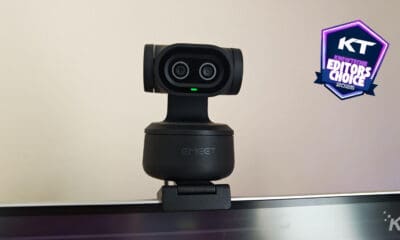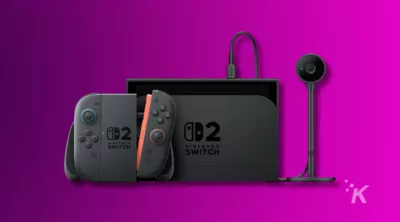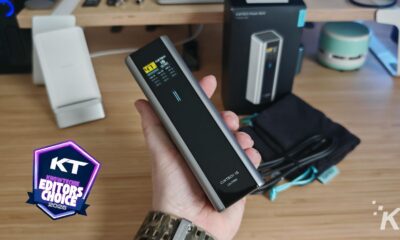Reviews
Review: EcoFlow Delta Pro battery backup
This is one heckin’ big battery but it gets the job done.
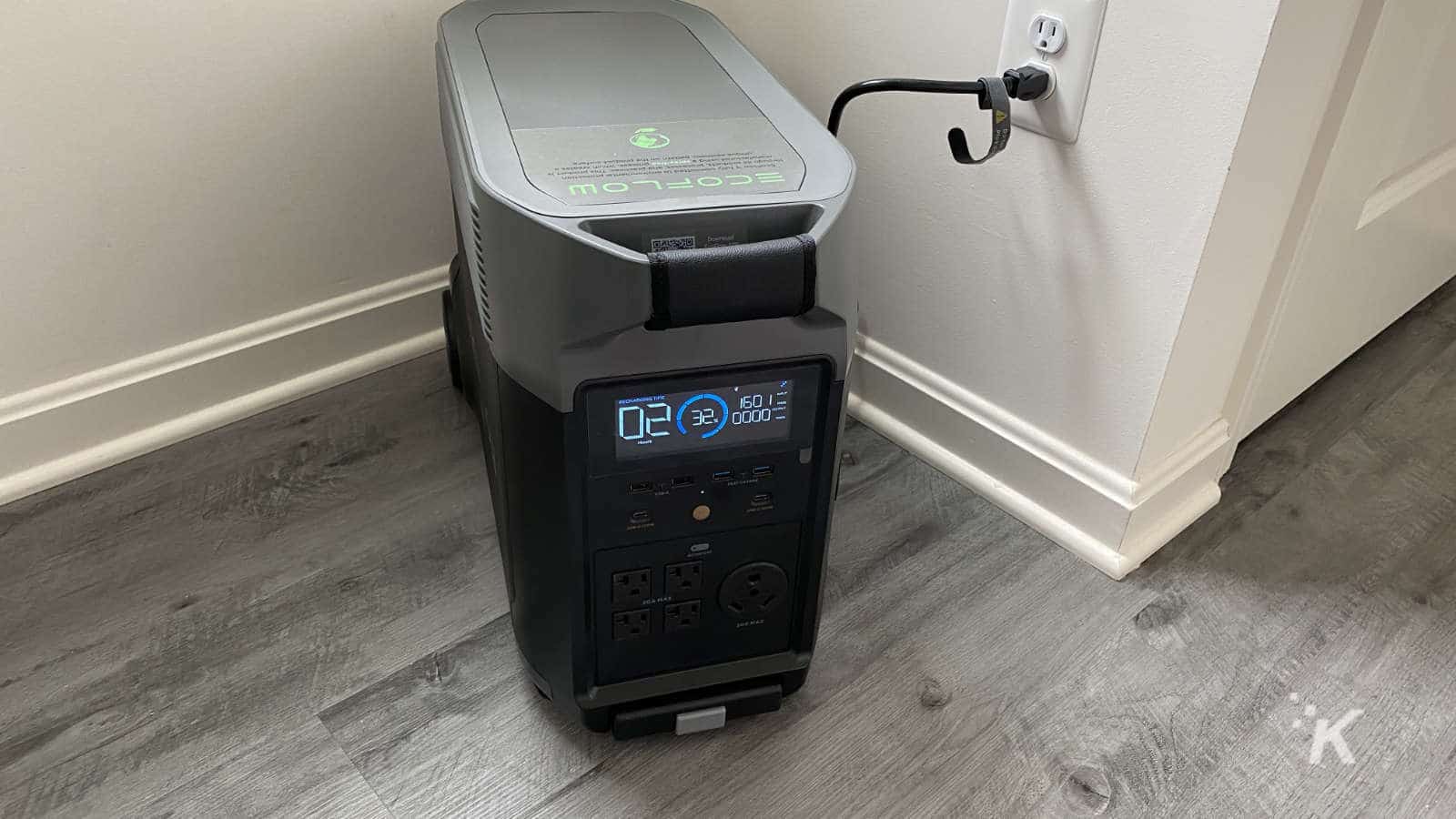
Just a heads up, if you buy something through our links, we may get a small share of the sale. It’s one of the ways we keep the lights on here. Click here for more.
[letsreview postid=”209260″]
Portable power stations are getting better all the time. Whether they’re for van life or coping with temporary power outages, they’re a great thing to have around.
Today, we’re looking at one such battery generator, the $3,600 EcoFlow Delta Pro.
It was created after a wildly successful Kickstarter campaign, and now it’s in full production. It’s a hefty battery with the latest tech inside. It’s also got a handy app for changing settings and monitoring.
EcoFlow has built a large ecosystem around Delta Pro, so we’ll also discuss that. Let’s dive in.
Here are some of the things we’ll be covering in this review:

Delta Pro: What is it?
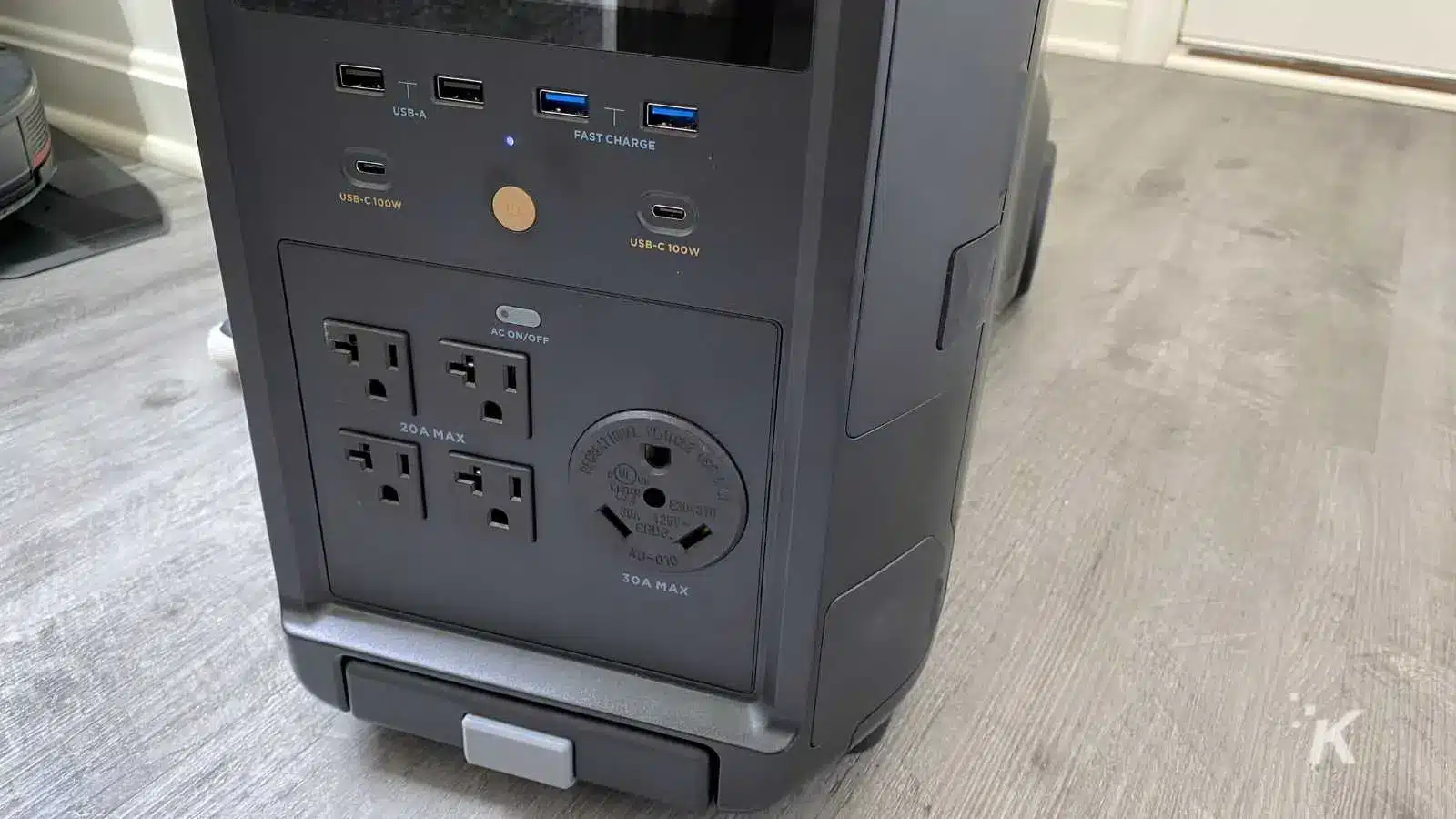
The EcoFlow Delta Pro is about the size of a carry-on suitcase. Inside the case are 3.6kWh of LiFePo4 battery cells, which are rated at 3500 charge cycles before it drops to 80% capacity. That’s about seven times the cycle count of most backup batteries using other technologies.
That stored power can be accessed from a multitude of ports. There are four AC ports on the 240V EU/UK model or five AC ports on the US version (four 20A and one 30A).
Two USB-A 2.4A ports at 12W. Two USB-A ports at 18W fast charge. Two 100W USB-PD ports. A 12V 10A carport socket. Two 38W DC ports and one Anderson 12.6V 30A port. Phew.
That enables 3600W of a continuous draw or 4,500W in Xboost mode. It’ll switch off if you go over that load, so you don’t have to worry too much about counting the devices you plug in. If you have two Delta Pro units, you can link them to get 7,200W.
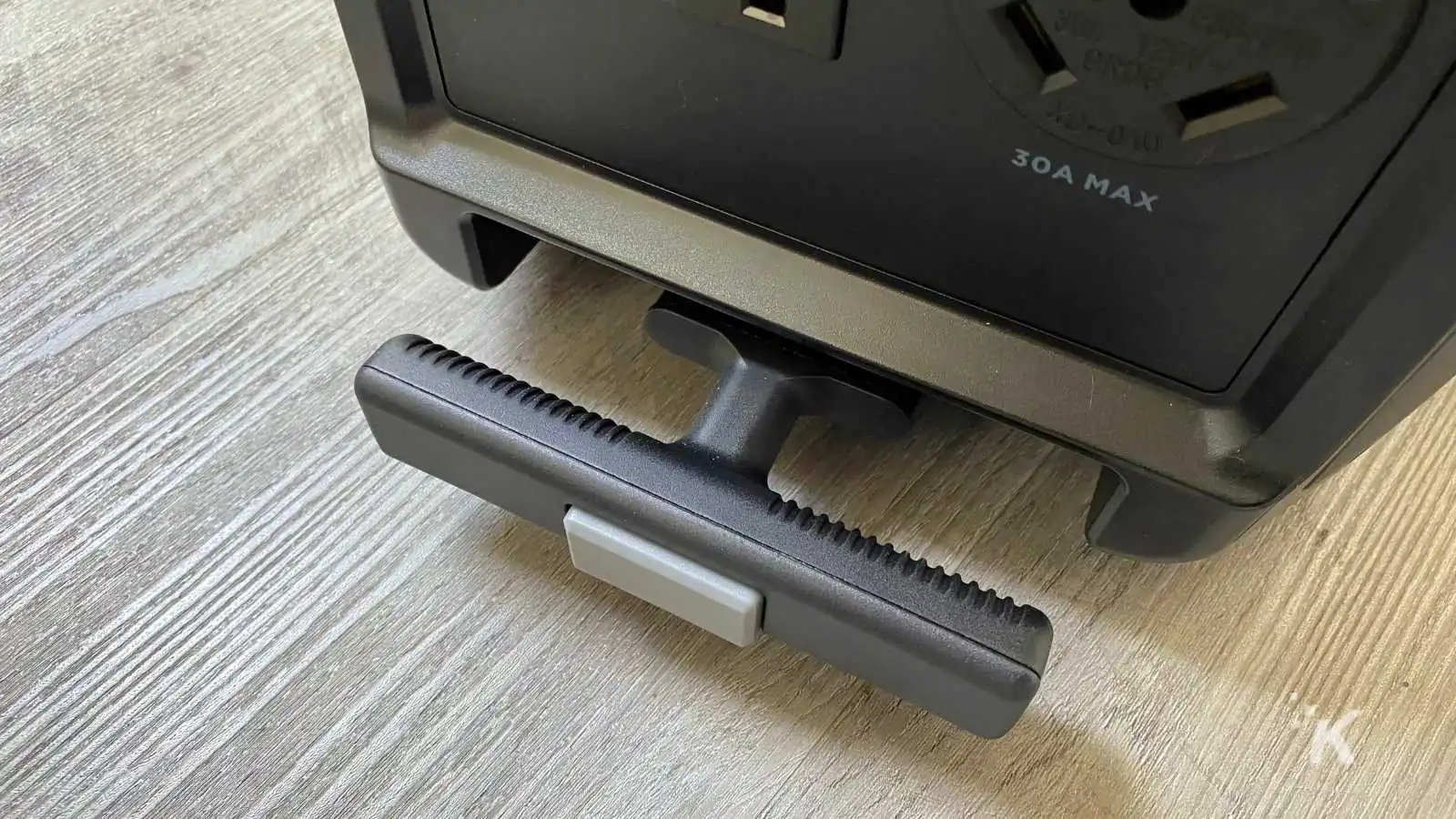
Those battery cells mean it tops the scales at 100lbs, so it’s a good thing there are two wheels on the unit to pull it around and a handle that comes out of the other side.
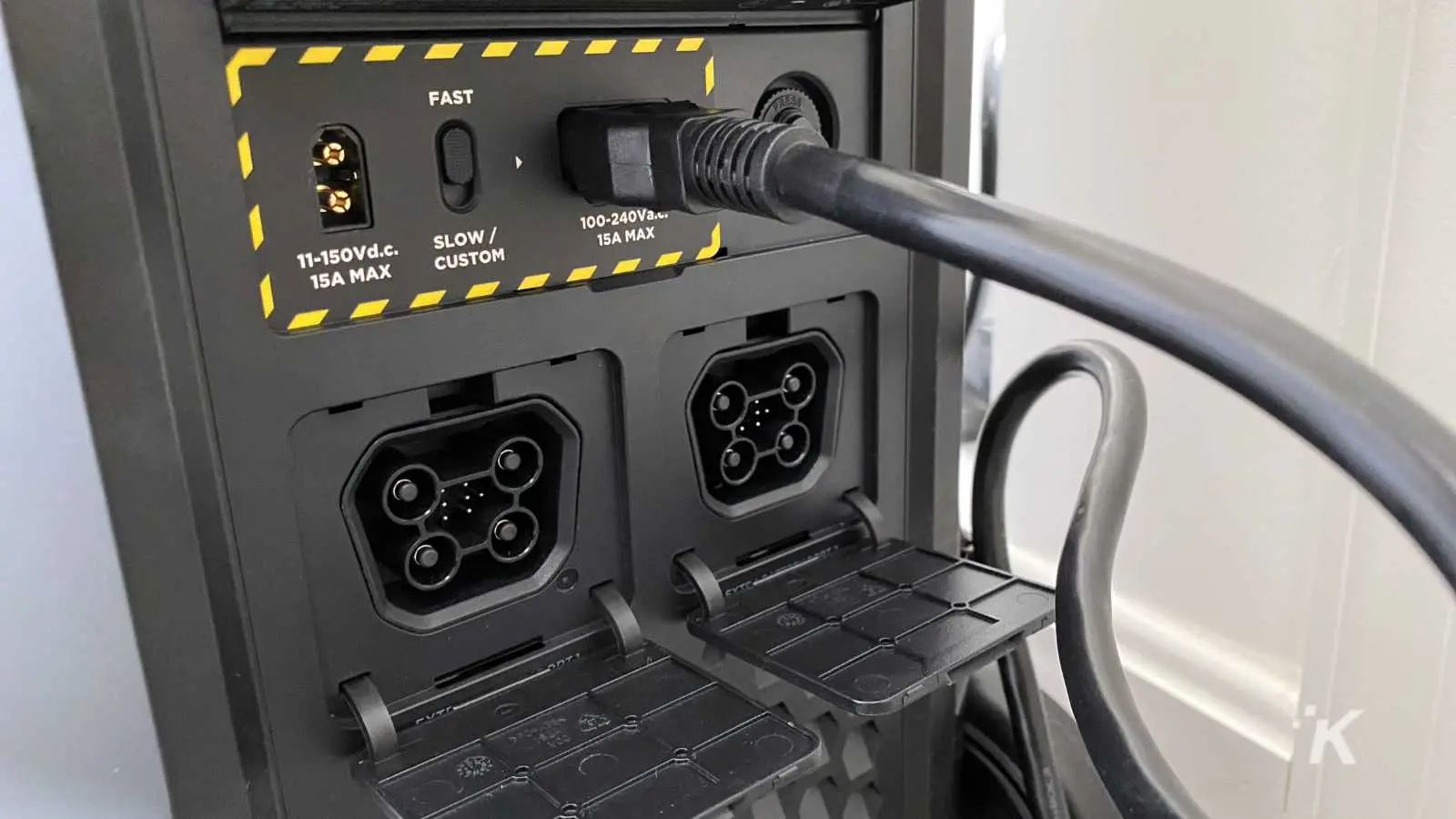
You can recharge it via AC, in either slow or turbo modes, from your car or solar panels with an 11-150V, 15A max from an XT60 connector. EcoFlow supplies all the charging cables you could use, which is nice.
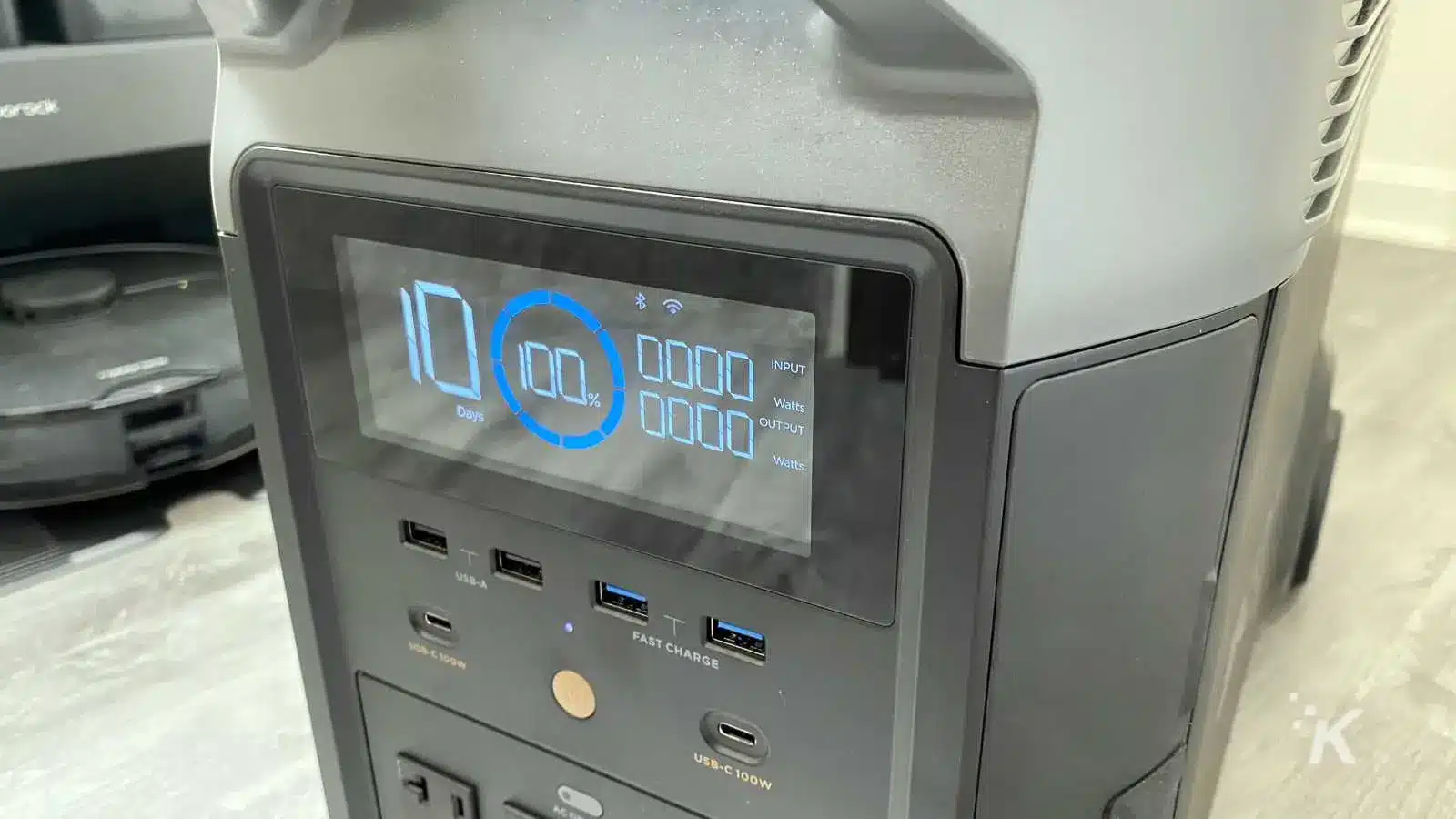
The LCD on the Delta Pro shows handy statistics, including time-to-recharge, input and output power, and various other working states. That’s more of a backup, though, as the companion app has more information inside.
EcoFlow has a robust ecosystem
We haven’t tested the other parts of the system yet, but EcoFlow has made a point to create a full ecosystem around the Delta Pro. Each unit can be expanded by adding 3,600Wh battery units.
The whole thing can be wired into your home’s distribution panel to automatically switch on if it detects a power outage. There are also multiple solar panels, a robot to follow the sun for optimal charging, and a smart gas generator.
Tests and observations of the Delta Pro
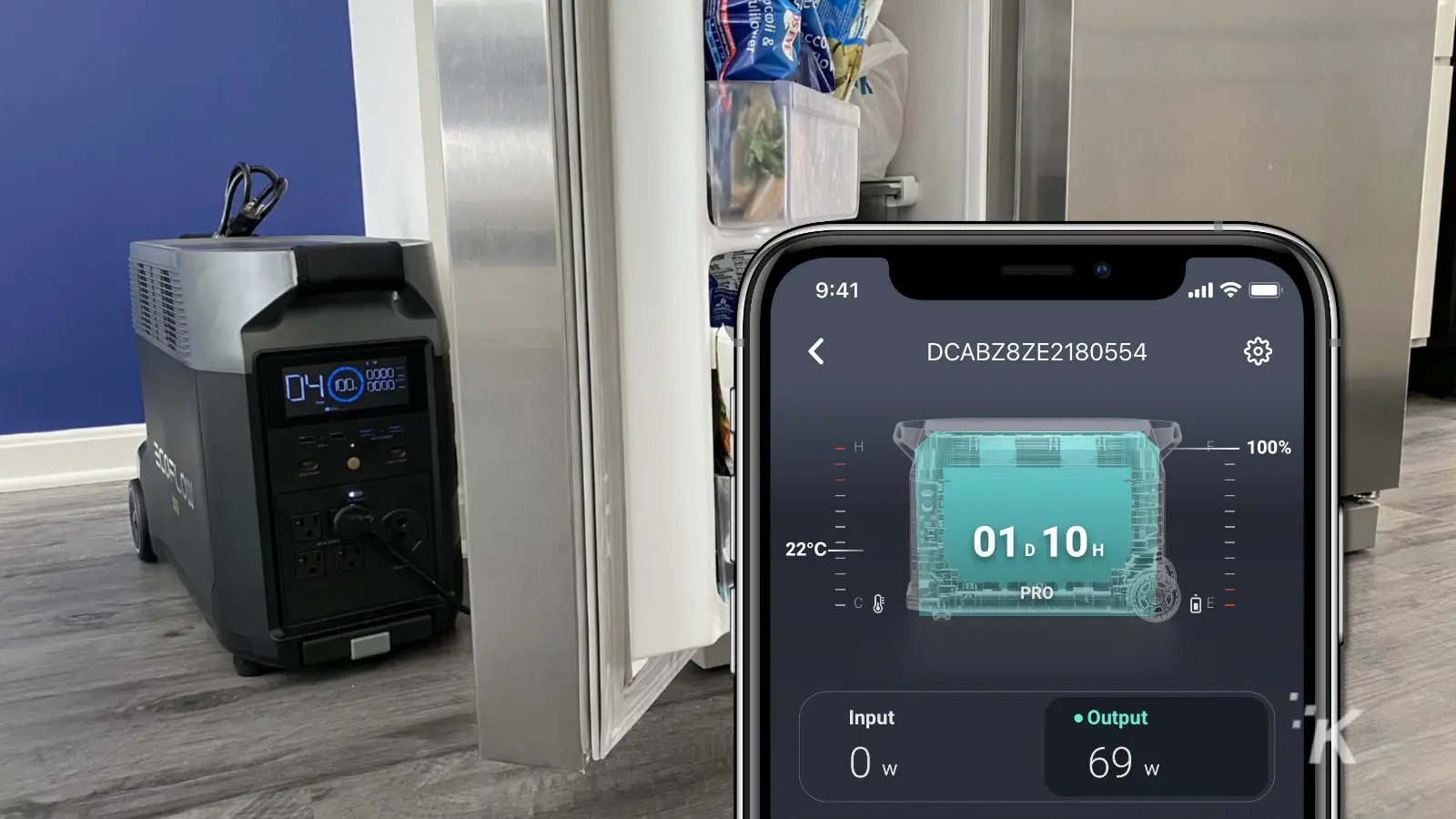
These kinds of battery backup solutions are best suited to charging smaller devices or running one large essential one. But, that said, what’s more essential than your fridge, right?
The average American household uses much more power daily than the Delta Pro can provide. We use about 30kWh daily, mainly because of the central air. The 3.6kWh of the Delta Pro is enough to keep essentials like your fridge or freezer running during power outages, so you don’t have to replace food.
With a 100% charge, the EcoFlow Delta Pro said it would keep my large fridge freezer unit powered up for around 34 hours. That’s plenty of time for the power to come back on.
You’ll want some solar panels to keep things going for extended blackouts. We tested the 220W portable panel that EcoFlow sells, which charged the battery backup well.
Sure, you’d need more than 16 hours of sunlight to charge the battery back up fully. Every watt-hour you put back into the battery means longer before your food spoils, which is really important.
Wall charging is ridiculously fast
Charging takes about two hours from the wall. For such a large battery capacity, that’s insanely fast. It charges 1800W from A/C power, which could be enough to trip your circuit breaker at that speed.
The internal fan kicks in during turbocharging, so you don’t worry about the unit getting too hot.
EcoFlow lets you limit the charging to 400W if you have issues, and it’ll take maybe nine hours to charge at that speed. The limiting is done from the EcoFlow app, which gives you more control over the device.
The only annoyance about how fast this thing charges back up from a wall socket? You’ll want to keep hold of the plug that EcoFlow sends. It might look like a normal kettle lead, but it’s made of much thicker wires.
That’s the only plug you want to use with the Delta Pro, as any of the others in your house would literally melt when charging.
Smart but could be smarter still

The EcoFlow app is the best way to manage the Delta Pro. The unit does have basic physical controls, but the app has more utility. Everything from limiting charge rates to upgrading firmware can all be done with a few taps.
Once you connect the Delta Pro to Wi-Fi, you can control it from anywhere. Otherwise, it’s Bluetooth range only. You can check on charging, discharging, and even turn on or off the individual ports.
It’d be nice to see some level of scheduling here or triggering events via IFTTT or similar services. The user must manually do everything. That’s annoying if you live in an area that has cheaper utility prices during parts of the night, where you could benefit from scheduling charging at those times.
Does it have any competition?
This is still a fairly new category for consumer tech, but multiple companies have portable power stations out. We’ll review some of the direct competition by features and price.
- Goal Zero Yeti 3000X ($3,499.95): Lower total power draw at 2,000W (3,500W surge) vs 3,600W (4,500W surge) on the Delta Pro, USB-C at 60W max vs 100W, 600W max input vs 1800W, can’t charge from EV
- Jackery Solar Generator 2000 Pro ($3,599): Lower capacity, total draw, but you get a 200W portable solar power panel to charge with.
- Nature’s Generator Elite ($999.99): This seems insanely cheap until your notice it uses sealed lead acid batteries. That means fewer charge cycles and lower charge current, so it’ll take longer to recharge and output less power than lithium or LiFePO4
- Dory Power B-5000 ($3,799): Higher capacity at 5,170 Wh, Uninterruptible Power Supply capability, only four AC ports, and can only charge from an AC wall outlet.
- Bluetti AC300 + B300 ($3,699): Slightly lower max draw of 3,000W. Need multiple units as Inverter and Battery are separated. Can connect multiple batteries for higher capacity. No wheels.
The main thing to remember is that every unit has drawbacks and advantages. Lighter units sacrifice power, and better-performing units are heavy.
You could go for a gas-powered generator, but then you have to factor gas prices into the equation. A 5kW generator uses 0.75 gallons per hour. That’s nearly $75 a day at current prices.
So, should you buy the EcoFlow Delta Pro?
There used to be a gap in the battery market between portable power banks and whole-house systems. Used to be. The EcoFlow Delta Pro has firmly bridged that gap, with 3.6kWh of power and robust accessories set.
You get insanely fast charging when plugged in and impressive speed when using solar to recharge. You can add up to two more batteries or wire them into your breaker box to automatically power specific circuits.
EcoFlow has a gas generator that can automatically kick in to top the Delta Pro backup. You can even charge it back up from an EV station.
Sure, it’s $3,600. That’s expensive, but competitors like Bluetti are around the same price or more. With power grid issues becoming more common, can you afford not to have a backup option?
You can get the Ecoflow Delta Pro from Ecoflow, Amazon, and Wellbots. It also pops up at other retailers occasionally, as well.
Have any thoughts on this? Let us know down below in the comments or carry the discussion over to our Twitter or Facebook.
Editors’ Recommendations:
- Review: Edifier MS50A wireless smart speaker
- Review: ZERO BREEZE Mark 2 portable AC unit
- Review: Truly Ergonomic CLEAVE keyboard
- Review: Samsung M8 Monitor – is it worth it?
Just a heads up, if you buy something through our links, we may get a small share of the sale. It’s one of the ways we keep the lights on here. Click here for more.


















